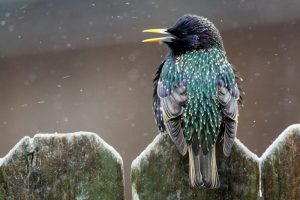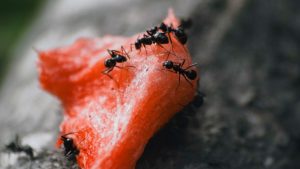Short answer
The average lifespan of a Starling is about 2-3 years.
Life expectancy
The average lifespan of a Starling varies depending on various factors such as habitat, predation, and availability of food sources. In general, Starlings have an average life expectancy of around 2-3 years in the wild. However, some individuals have been known to survive up to 10 years or more in favorable conditions.
A major factor affecting the lifespan of Starlings is predation. These birds face threats from various predators, including larger birds of prey such as hawks, owls, and falcons. Additionally, the presence of natural predators plays a crucial role in regulating the population size of Starlings. The ones that manage to avoid predation can live longer lives.
Another factor that influences the average lifespan of Starlings is the availability of food sources. These birds are omnivorous and feed on a wide variety of foods, including insects, fruits, seeds, and grains. Areas with abundant food resources and suitable nesting sites can support larger populations with a higher survival rate, resulting in an extended average lifespan.
Overall, while the average life expectancy of a Starling is relatively short, the potential for a longer lifespan exists under favorable conditions. Factors such as predation pressure and availability of food resources play crucial roles in determining the lifespan of these birds.
Some interesting facts about Starling
- Starlings are famous for their ability to mimic sounds and calls of other birds, animals, and even human speech. They are considered one of the best mimics in the avian world and can imitate a wide variety of sounds with remarkable accuracy.
- European starlings were not native to North America but were introduced in the late 1800s by a Shakespeare enthusiast. In an attempt to introduce every bird mentioned in Shakespeare's works to the New World, Eugene Schieffelin released around 100 starlings into Central Park, New York. Today, they have become one of the most common and widespread birds in North America.
- Starlings are highly social birds and often gather in enormous flocks, especially during winter roosting. These flocks, known as murmurations, consist of hundreds or even thousands of birds flying and swooping together in intricate and mesmerizing patterns. The synchronized movements help them stay safe from predators and exchange information about food sources.
- While starlings are predominantly known for their black feathers, during the breeding season, their plumage transforms into a shimmering array of iridescent colors. The feathers take on shades of purple, green, and blue, creating a stunning display.
- Starlings are omnivorous and have diverse dietary preferences. They feed on a wide range of foods, including insects, berries, fruits, seeds, and even garbage. They often forage in open fields, lawns, or around human settlements, making use of their adaptable and opportunistic feeding behavior.
Summary
Starlings have a relatively short lifespan, with an average life expectancy of around 2-3 years in the wild. However, some starlings have been known to live up to 7 years in the wild, and up to 22 years in captivity. Various factors can affect their lifespan, such as environmental conditions, access to food and water, predation, diseases, and accidents. Overall, while starlings may not have the longest lifespan, they can still make a significant impact on their ecosystems and provide fascinating insights into avian behavior and biology.




